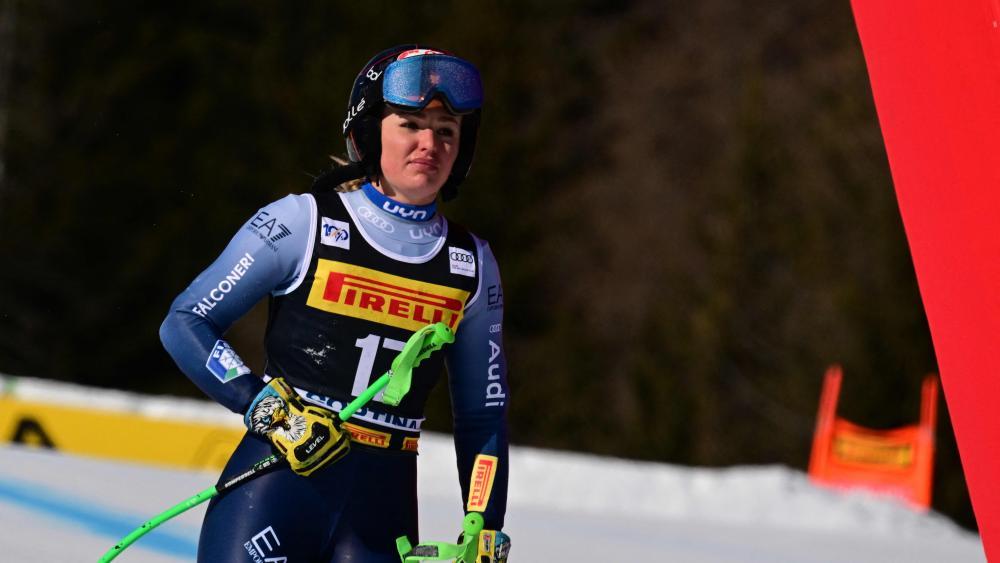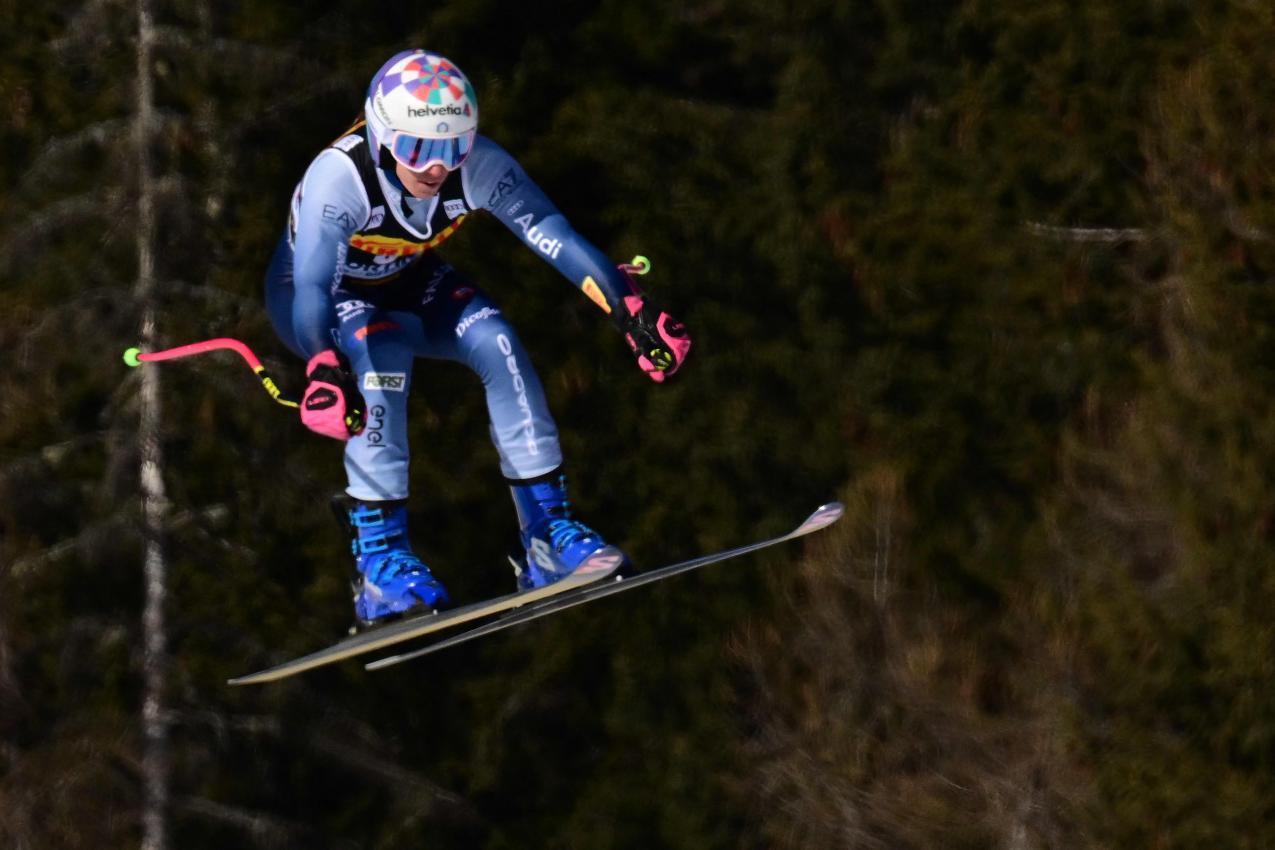
The Italian Roberta Melesi also fell in Cortina. © APA/afp / TIZIANA FABI
Ski circus puzzles over the orgy of falls in Cortina
Was Cortina d'Ampezzo the accidental highlight of an Alpine epidemic season, the result of a lack of (mental) freshness or an unusually tough place in the women's ski world cup? After a veritable orgy of crashes on the three days of racing in the Italian Dolomites, research into the cause was ambivalent.
29 January 2024
From: apa/dl
“It’s still a big question mark for me as to why so many falls happened,” Mirjam Puchner puzzled, and she wasn’t alone. There were some assumptions. For example, there was rampant uncertainty after two of the very best added themselves to the list of accidents, which had recently grown rapidly, after just one training session on Friday. For downhill Olympic champion Corinne Suter from Switzerland, the season is over prematurely after a cruciate ligament tear.
Mikaela Shiffrin also limped to the rescue helicopter with her face contorted in pain, but escaped lightly with a rumored injury to the inner ligament. Did the falls of the exceptional athletes have an impact that penetrated deeply into the psyche of their colleagues? Shiffrin claimed to have experienced “some scary moments” during training. On Sunday there was also something in Cortina Canadian Valerie Grenier injured.
Cortina “more dangerous than usual”
Norwegian Kajsa Vickhoff Lie, who often ranks second only to Sofia Goggia when it comes to risk, said Cortina was “more dangerous” than usual this year. But even this finding was divided. The Austrians, for example, didn't notice any of the larger teeth on the “Olimpia delle Tofane” piste, or at least they didn't say anything about it publicly.“I just didn’t want to take any chances.” Lara Gut-Bahrami
Lara Gut-Behrami confessed after her victory on Sunday in the Super-G. “I just didn’t want to take any risks. I didn't ski as tight a radius as I usually do.” Skiing is easy if you don't worry too much. “But that was difficult in the last three days because skiing was no longer really the focus.” After strenuous days, she knew “that my head wasn’t that fresh,” the 32-year-old told the Swiss news agency Keystone-SDA. “I think that also explains the many falls. If your legs and mind aren’t completely fresh, it won’t take much for you to end up in the net.”
Discussion about racing calendar and driving style
This fits with the findings that Shiffrin made before her fall. “January always feels long, especially in the years without the Olympic Games or World Cup,” Shiffrin told Eurosport. Some are on the road non-stop in the busy first month of the year. “It can be difficult to keep the momentum and energy up.”Marta Bassino jumping in Cortina. © APA/afp / TIZIANA FABI
It should be noted that Gut-Behrami and Shiffrin are among the most frequent riders in the World Cup. Gut-Behrami will compete in a giant slalom at Kronplatz on Tuesday. On a small scale, keeping the focus high in Cortina was primarily something that runners with higher numbers had to master. First aid measures and clean-up work after falls, as well as gusts of wind on Saturday, made the racing days very long, especially for the inexperienced and less talented.
Quite a few accidents could be attributed to inadequate posture before larger waves and jumps. In this regard, Felix Neureuther argued that jump training was generally neglected. Austria's head coach Assinger accepted the German ex-ski star's point. “You can definitely start there and practice it more.”
Suggestions
Edit Profile
You have to sign into use the comment function.










Comments (0)